香港快運因人手不足而臨時取消18班定期航班,影響約2,000名乘客。工會指責其長期人手短缺,「10個桶5個蓋」。立法會議員譚文豪稱,可能違反民航處當值時間上限(註一)。它限制空中服務員每周不得超出55小時工作和其他一些休息條件,但航空公司可以睬它都傻。
長期飛行會否導到航空服務員超出輻射上限?這問題一直受到關注。BBC 有文章表示,空姐患皮膚癌和乳癌的機會高於平均;NASA 也表示,問題可能比想像中嚴重(註二)。目前航空業只在和諧式客機和飛越兩極的客機紀錄機師等人的受輻射劑量。
香港快運人手問題引起本地專家關注,航空公司有否在預防輻射上保障員工(註三)?國際民用航空組織對些有建議,但似乎沒有嚴格要求(註四)。英國航空局要求員工明白其可能受輻射,或飛行紀錄(註五)。香港快運和香港航空,這些來自大陸資本(海航集團)的公司可能不跟國際慣例。
註冊在香港的香港快運員工在本地法例下有什麼保障呢?香港有一個輻射管理局。它們雖然說,航空輻射不關它們的事,但根據條例,「不論是由於接獲消息或是其他原因,如管理局有理由相信,任何受僱擔任輻射工作的人蒙受過量輻射照射」,它們仍然要做嘢的。
備註
註一
CAD 371(2nd Edition)
THE AVOIDANCE OF FATIGUE IN AIRCREWS
Maximum Duty Hours
The maximum duty hours for Flight Crew, shall not exceed:
24.2.1 55 hours in any consecutive 7 days, but may be increased to 60 hours, when a rostered duty covering a series of duty periods, once commenced, is subject to unforeseen delays. This 7 day, 60 hour limit may be further exceeded by a maximum of 10 hours provided this 10 hour exceedence is used solely for the purpose of positioning a crew member back to his home base to complete his duty cycle.
24.2.2 95 hours in any 14 consecutive days.
24.2.3 190 hours in any 28 consecutive days
國泰空中服務員工會於網上撰文指,國泰於過去3年一直以「影響公司運作」為由,拒絕遵守民航處飛行標準371的要求,即候命空中服務員自接到召喚後,給予其45分鐘準備時間和90分鐘通勤時間。工會指,現時國泰給予機師135分鐘準備及通勤時間,但空中服務員只有共90分鐘,工會過去3年向民航處反映,7月上旬獲民航處通知已與國泰航空營運部達成共識,將於今年10月統一兩者時間。
A meta-analysis published last year in the Journal of Radiological Protection concluded that overall cancer risk was not elevated, but that “malignant melanoma, other skin cancers and breast cancer in female aircrew have shown elevated incidence.”
Modeling Radiation Exposure for Pilots, Crew and Passengers on Commercial Flights12.19.08
Concerns have grown for three primary reasons. Pilots log twice as many flight hours now as then, while flight attendants typically log more hours than pilots. Epidemiological studies have shown this type of exposure to be more damaging than previously thought. And, the number of polar flights is increasing, Mertens said.
註三
The law applies as long as the employee and employer are based in HK. Galactic cosmic ray exposure is about 3 - 8 microsievert per hour depending on latitude and altitude of the flight path.
Cathay's own medical service would record the flying time and routes of the cabin crew so that they will not receive a dose exceeding 6 millisievert a year, meaning an air time ~ 900 - 1000 hours a year. The limit for pregnant worker is 1 millisievert during the pregnancy, hence normally they are grounded as soon as pregnancy is known.
Airlines do not actively disclose the information to their staff and limit air crew flying time to 1000 hours a year under the pretext of avoidance of fatigue. Fatigue is only part of the reasons.
Recommendations
1.8.21 In view of the fact that ionizing radiation is now assumed to play a role in mutagenic or carcinogenic activity, any procedure involving radiation exposure is considered to entail some degree of risk. At the same time, however, the radiation-induced risks associated with flying are very small in comparison with other risks encountered in daily life. Nevertheless such risks are not necessarily acceptable if they can be easily avoided.
1.8.22 Theoretically, the radiation exposure in air crew can be reduced by optimizing flight routes and crew scheduling, and by installation of radiation warning devices7. Such devices are particularly effective in detecting high momentary radiation during solar flares and can thus be used in determining a need for a lower cruising level. Female crewmembers should be aware of the possible risk to the foetus and should be scheduled in such a way as to minimize the exposure during pregnancy.
1.8.23 Much study has been directed to the potential hazards of cosmic radiation (CR) to flight crews and passengers of supersonic transport (SST) aircraft. Measurements show that in the high latitudes above 50N the maximum total body dosage at 65 000 ft (~20 000 m) — an altitude approximating the cruise altitude of SST aircraft — is about0.013 mSv/hour. Because of the reduced journey time the dosage per unit of distance traveled is about the same as incurrent subsonic jets where 0.005 mSv/hour is recorded during flights at about 37 000 ft (11 000 m) and at latitudes around45ΕN. CR is not therefore expected to be significantly more hazardous to the flight crews and passengers of SST aircraft, as even if the mileage flown by crews were to be doubled, the effects of CR would not be regarded as harmful. As previously stated, Annex 6, Part I, (paragraphs 6.12 and 4.2.11.5) contains provisions concerning radiation monitoring in aeroplanes operated above 49 000 ft (15 000 m).
The operator should have a system of record keeping which should be detailed in the Operations Manual and which should be available for inspection by the CAA.
To facilitate using flight time and duty rosters for the maintenance of radiation records, and to give a more accurate record of dose received, the ANO requirements relate to a rolling year. This defines the year of record as being the period of 12 months expiring at the end of the previous month and accords with one of the definitions in the ANO with regard to flight time limitation records.
Similarly, the radiation records should be kept for a 12 month period after the last complete 12 month period recorded, i.e. for two years. This accords with the requirement to keep flight time limitation records for one year after the flight referred to. However, individuals exposed to more than 6mSv in any 12 month period must have their records kept for 30 years (even if the person is deceased), or until the individual reaches 75 years, whichever is the longer period of time.
Individuals are entitled to have access to their records and to be able to obtain a copy to pass on to a new employer, should they change employment.
註六
Airline operators are not involve in activities related to import, export, possession or use of radioactive substance or irradiating apparatus. Hence the Radiation Ordinance does not apply.
第303B章 《輻射(管制輻照儀器)規例》
條: 13 懷疑受過量輻射照射的個案的健康檢查及查究 30/06/1997
(1) 不論是由於接獲消息或是其他原因,如管理局有理由相信,任何受僱擔任輻射工作的人蒙受過量輻射照射,管理局須按第9條訂明的方式,要求該人接受醫務小組的健康檢查;如在檢查後,管理局信納該人正蒙受過量輻射照射的影響至需要醫療的程度,則管理局除可採取其認為適合的第9條所載的任何行動外,須免費向該人發出證明書證明該人的情況。
(2) 在不損害第(1)款所載任何規定的原則下,如管理局有理由相信,任何受僱擔任輻射工作的人正蒙受過量輻射照射的影響,或看來曾蒙受過量輻射照射,管理局可委任一名或多於一名代表,調查該人的工作環境或工作習慣,以及該人所使用的任何設備,並就該等調查向管理局作出報告。
(3) 任何人故意妨礙或明知給予虛假資料而試圖誤導任何根據第(2)款獲委任以進行本條所指任何調查的管理局代表,即屬犯罪,一經定罪,可處罰款$3000。


